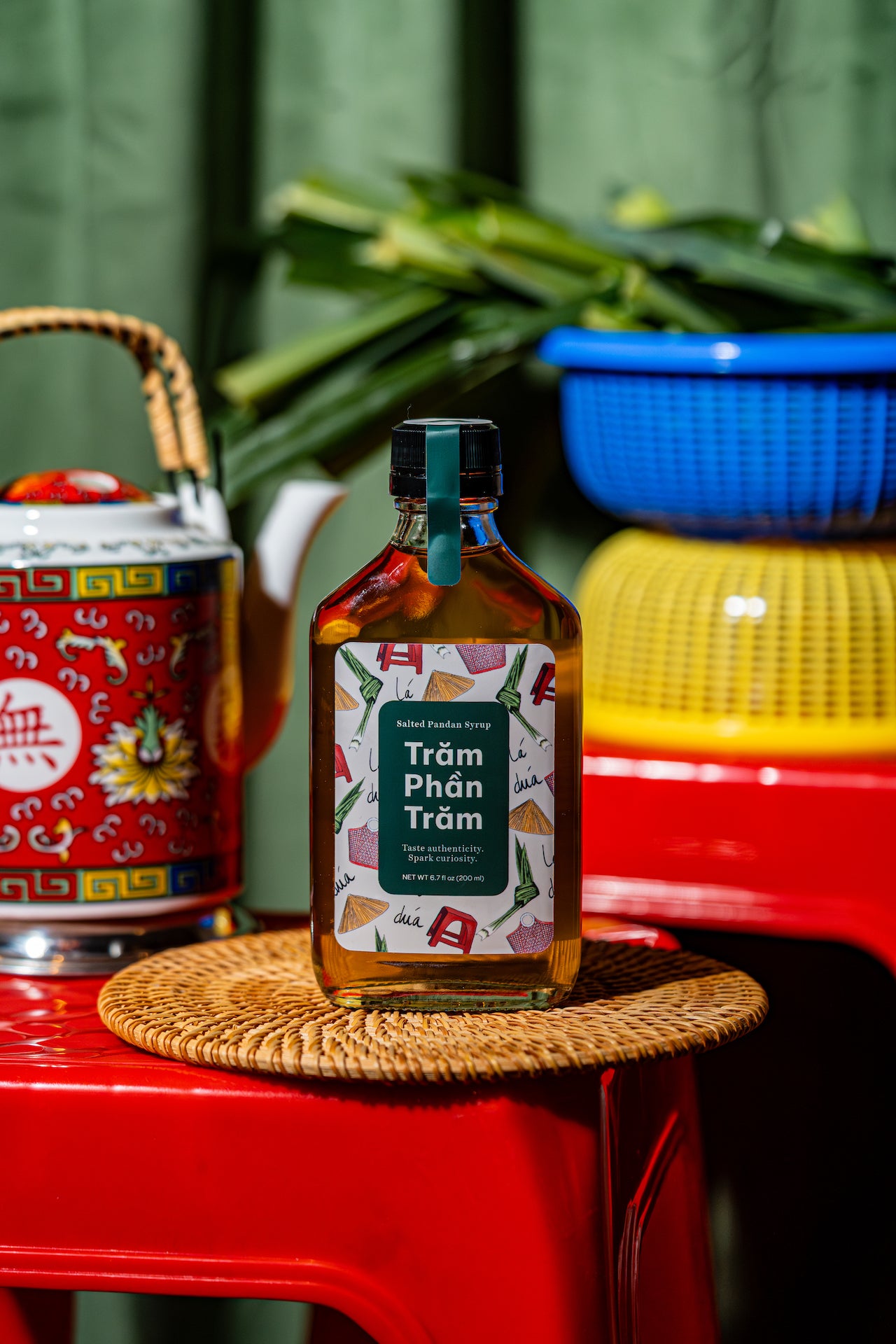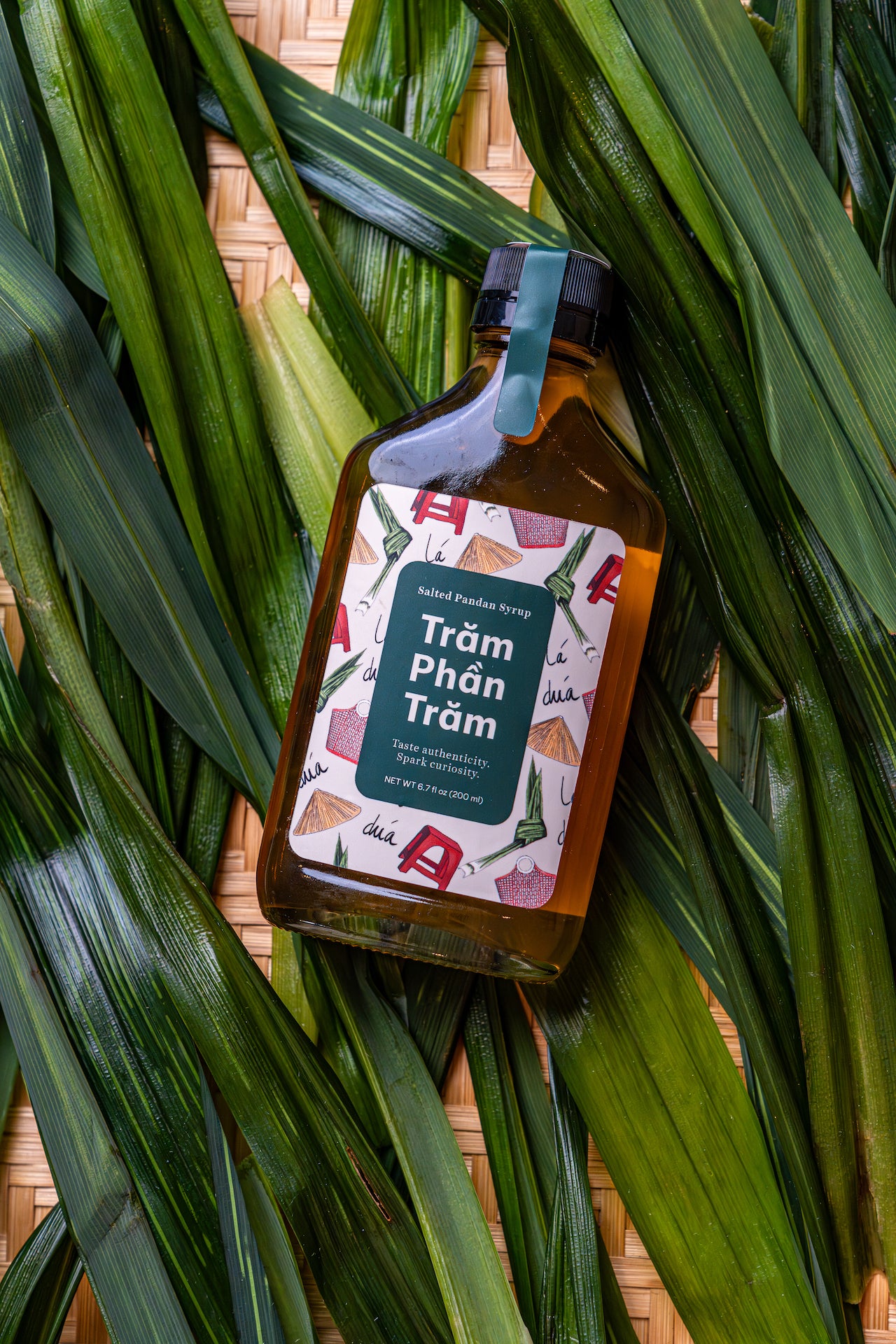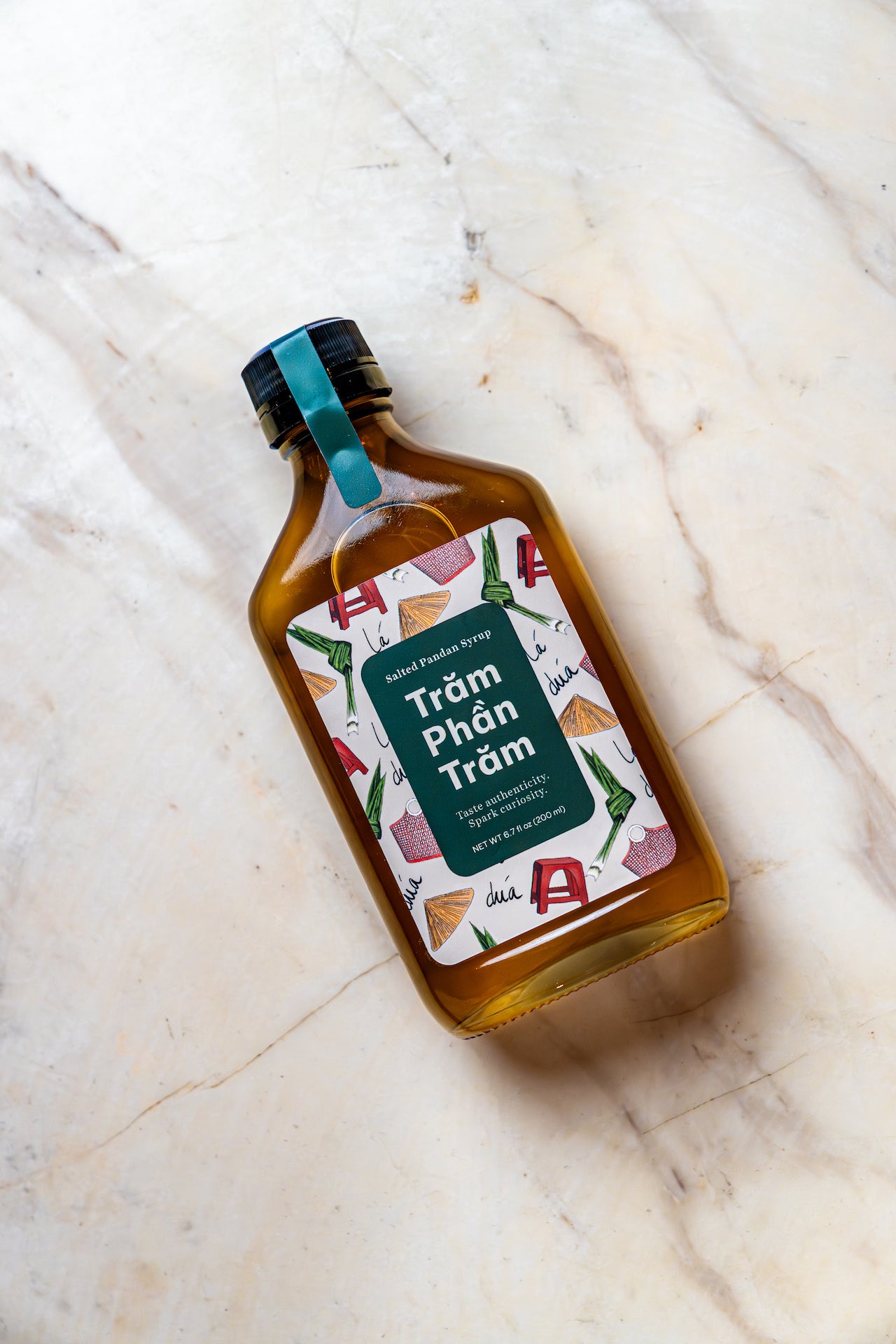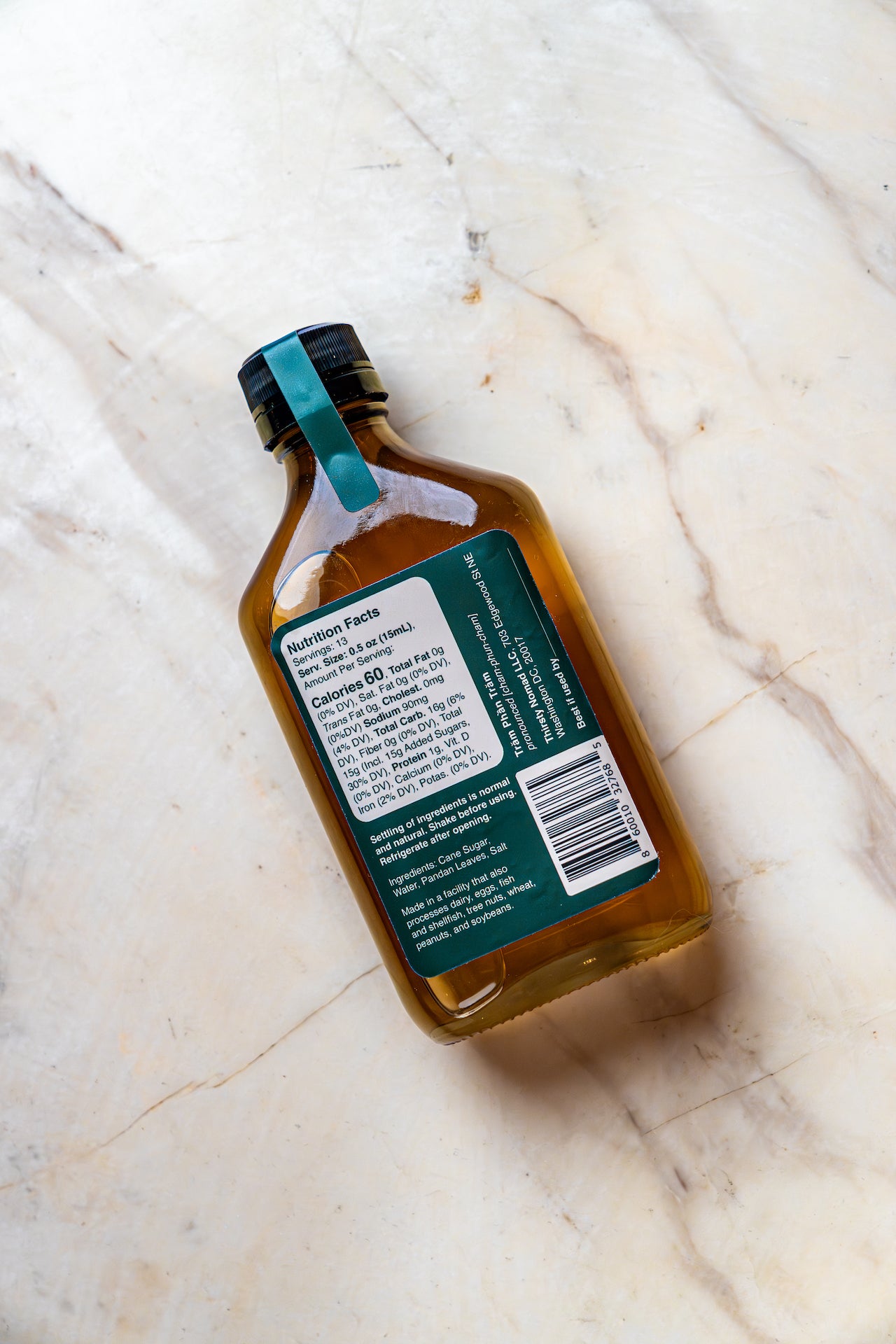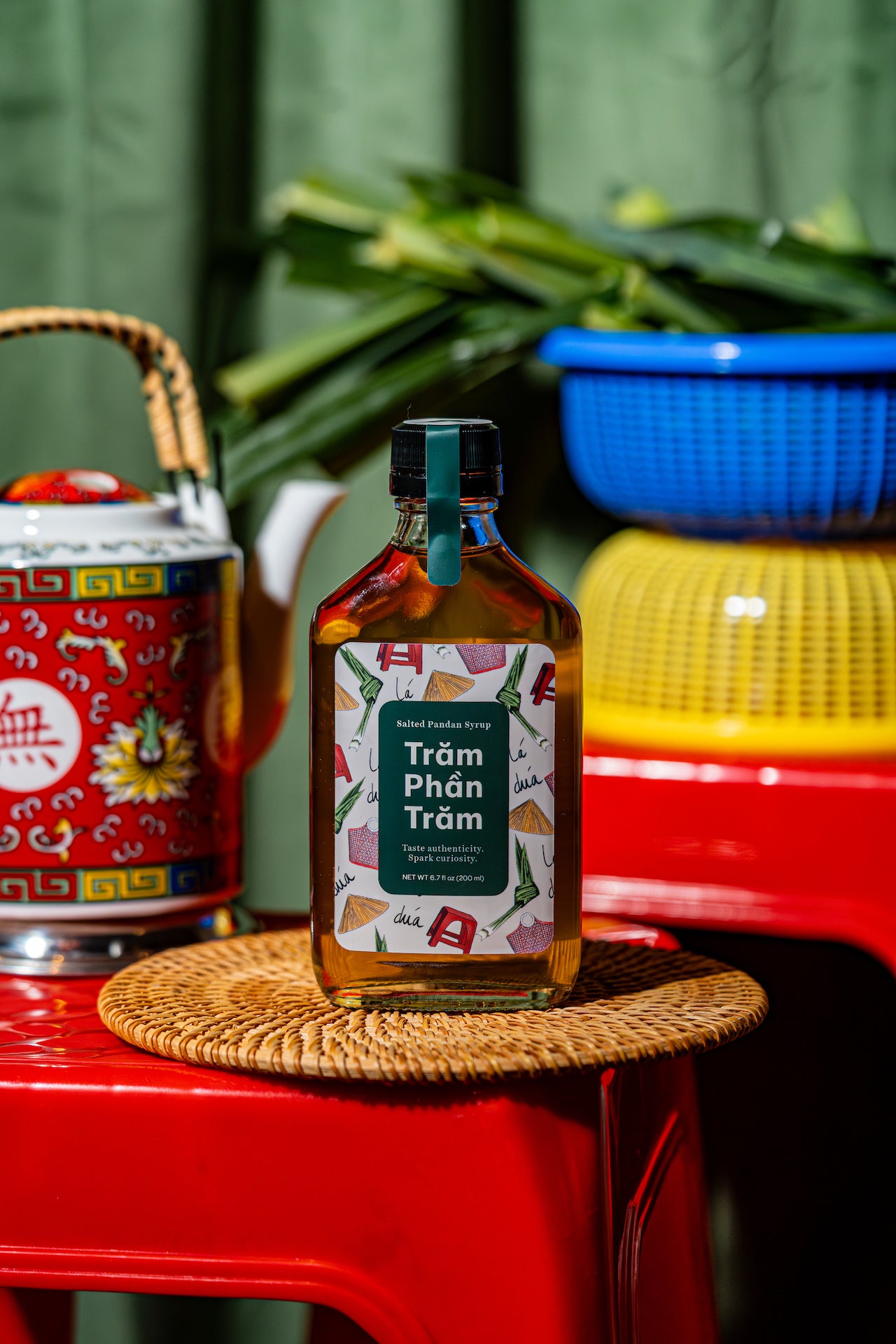Explore the Ingredient: Pandan
If you catch a glimpse of anything green in Vietnamese dishes, chances are high that it's the work of lá dứa, also known as pandan.
Back to my student days in Vietnam, Sâm Dứa Sữa is literally my drink obsession. Picture this: the school bell rings, signaling the end of another day of classes. Like a swarm of bees breaking free from their hive, my friends and I sprinted towards the vendor stationed just outside our school. The air is filled with the mouthwatering fragrance of snacks and drinks, teasing our senses, and igniting our appetites. But, there was only one thing on my mind—the Sâm Dứa Sữa.
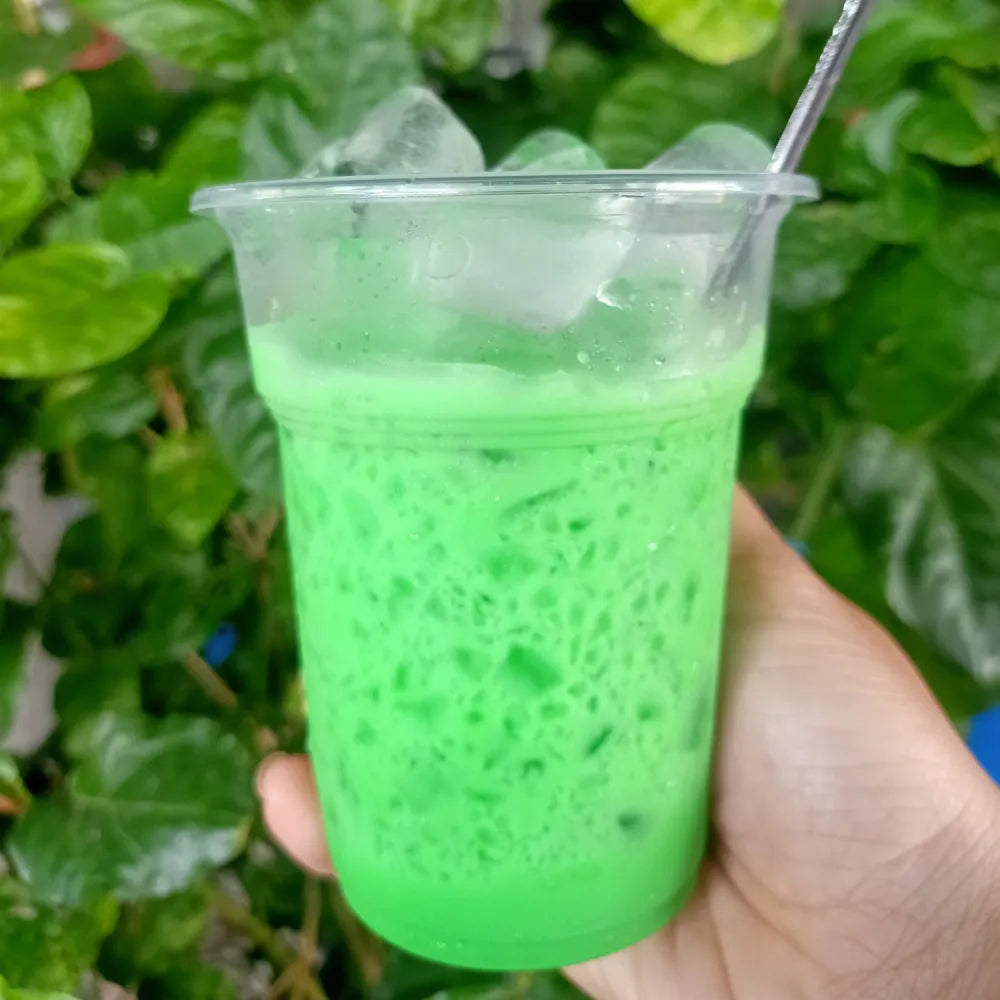
With pandan extract, condensed milk, and crushed ice beautifully blended together in a humble cup, each sip of Sâm Dứa Sữa was like a mini escape from reality. As the liquid touched my lips, the scorching heat of Vietnam seemed to disappear, replaced by a refreshing wave of pure bliss.
What is Pandan?
Pandan, scientifically known as Pandanus amaryllifolius, is a tropical plant widely celebrated in South and Southeast Asian cuisine for its exceptional flavor and aroma. Pandan leaves have a vibrant green color and a fragrant, floral scent.
Pandan's aromatic profile is likened to a grassy note, but without the earthiness typically associated with such scents. Pandan is sometimes referred to as "the Asian vanilla" or "vanilla of the East" due to its similarity in versatility and aroma. Personally, I find pandan's unique fragrance to be a delightful combination of nuttiness and subtle floral sweetness.
Pandan can be used fresh or dried and are commonly tied into knots or cut into strips before being added to various recipes. They are especially popular in South and Southeast Asian cuisines, including India, Sri Lanka, Thai, Indonesian, and Vietnamese cuisines.
Exploring the Versatility of Pandan
Pandan leaves indeed have a versatile role in Vietnamese cuisine. One popular application is in the creation of Bánh Bò Nướng, a classic Vietnamese honeycomb cake. To achieve the cake's vibrant green color, I remember my mom would blend the pandan leaves with water and the resulting liquid is strained and added to the batter. The infusion of pandan lends the cake its bright green color, complementing its distinct honeycomb texture and golden-brown crust.
Similarly to Malaysian and Indonesian cuisines, Vietnamese home cooks also utilize pandan leaves to add a subtle sweet fragrance to rice dishes. During the cooking process, the pandan leaves, often tied in knots, are placed in the rice pot, allowing the delightful aroma of pandan to infuse the rice, enhancing the overall dining experience.
While pandan is often associated with sweet dishes, it also has savory applications in India & Sri Lankan cuisine. There, it is primarily used as a savory component in curry dishes, adding a distinct flavor profile to the culinary creations of the region.
In Thailand, a globally beloved dish called Gai Hor Bai Toey, or pandan-wrapped chicken, showcases another way to harness the aromatic essence of pandan. The chicken is marinated and then wrapped in pandan leaves before being grilled or fried, infusing the meat with a delightful fragrance and subtle flavor.
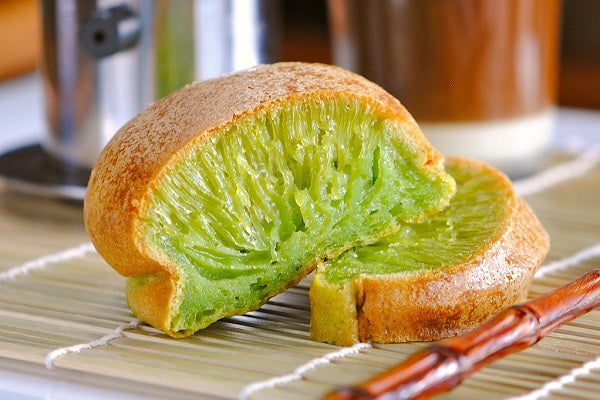
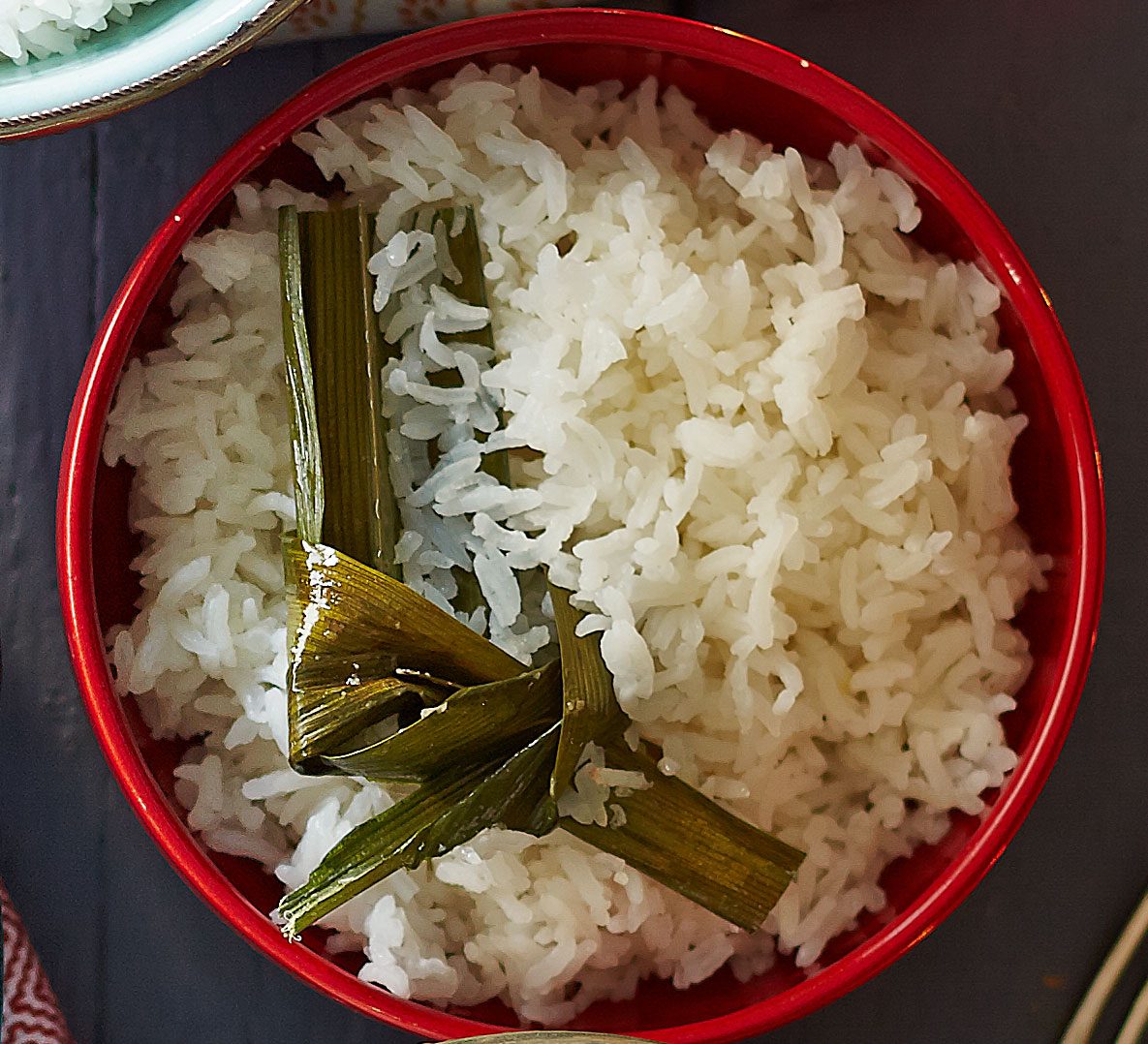
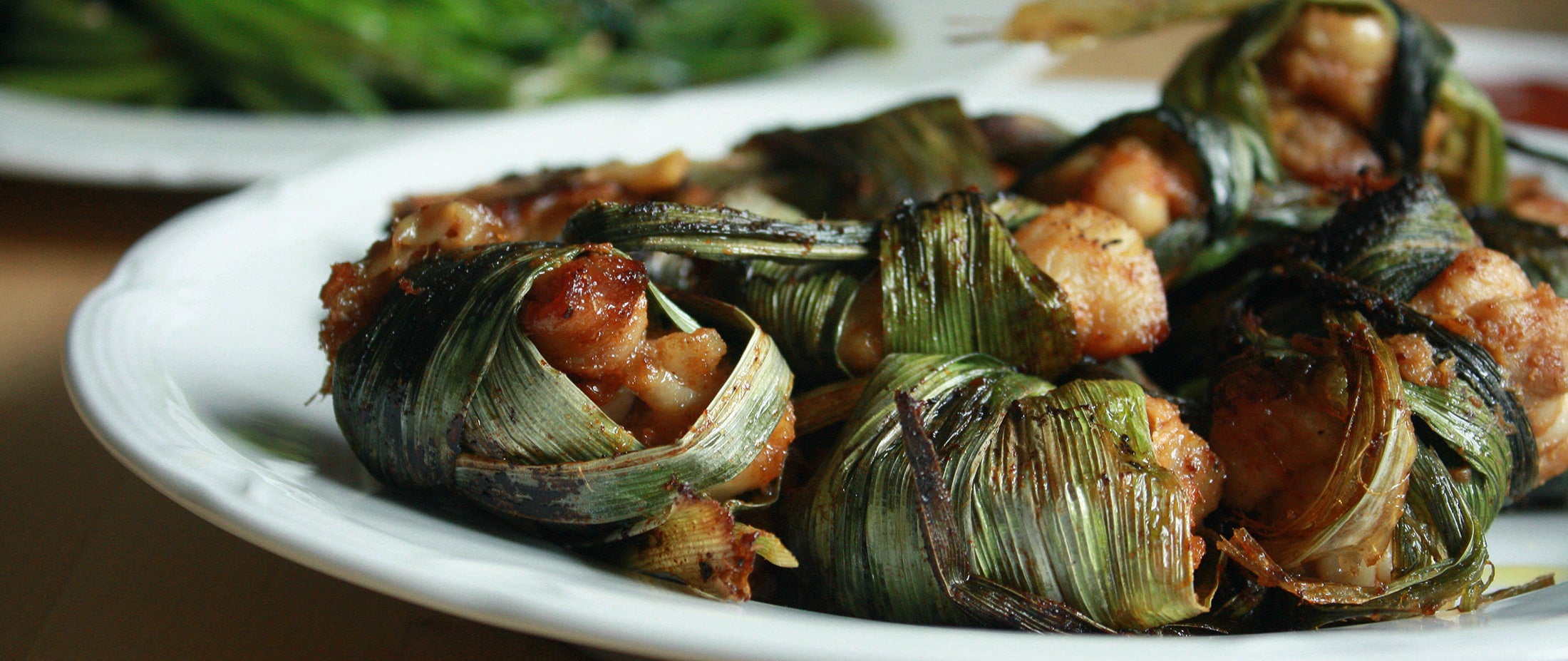
Pandan in Cocktails
As someone who has grown up with pandan as a part of my culinary heritage, it's incredibly heartwarming to witness its growing presence in American cocktail bars. It's like a taste of home, a connection to my roots, right here in the U.S. To see my fellow bartenders, embrace the challenge of incorporating pandan's unique taste into their creations is truly inspiring.
What excites me the most is how versatile pandan can be in cocktails. Its nutty flavor and delicate floral notes can transport you to a tropical paradise, evoking memories of vibrant flavors of Southeast Asia. When combined with ingredients like pineapple, citrus, and rum, pandan creates a symphony of flavors that dances on your palate. But it doesn't stop there. Pandan has been incorporated into classic cocktails such as the Negroni and Old-Fashioned, offering new dimensions to these beloved favorites.
For me, seeing pandan in American cocktail bars is more than just a trend. It represents a cultural exchange, a bridge between my heritage and the adopted home that I've come to love. It's a reminder that flavors and traditions can transcend borders and bring people together in a shared appreciation.
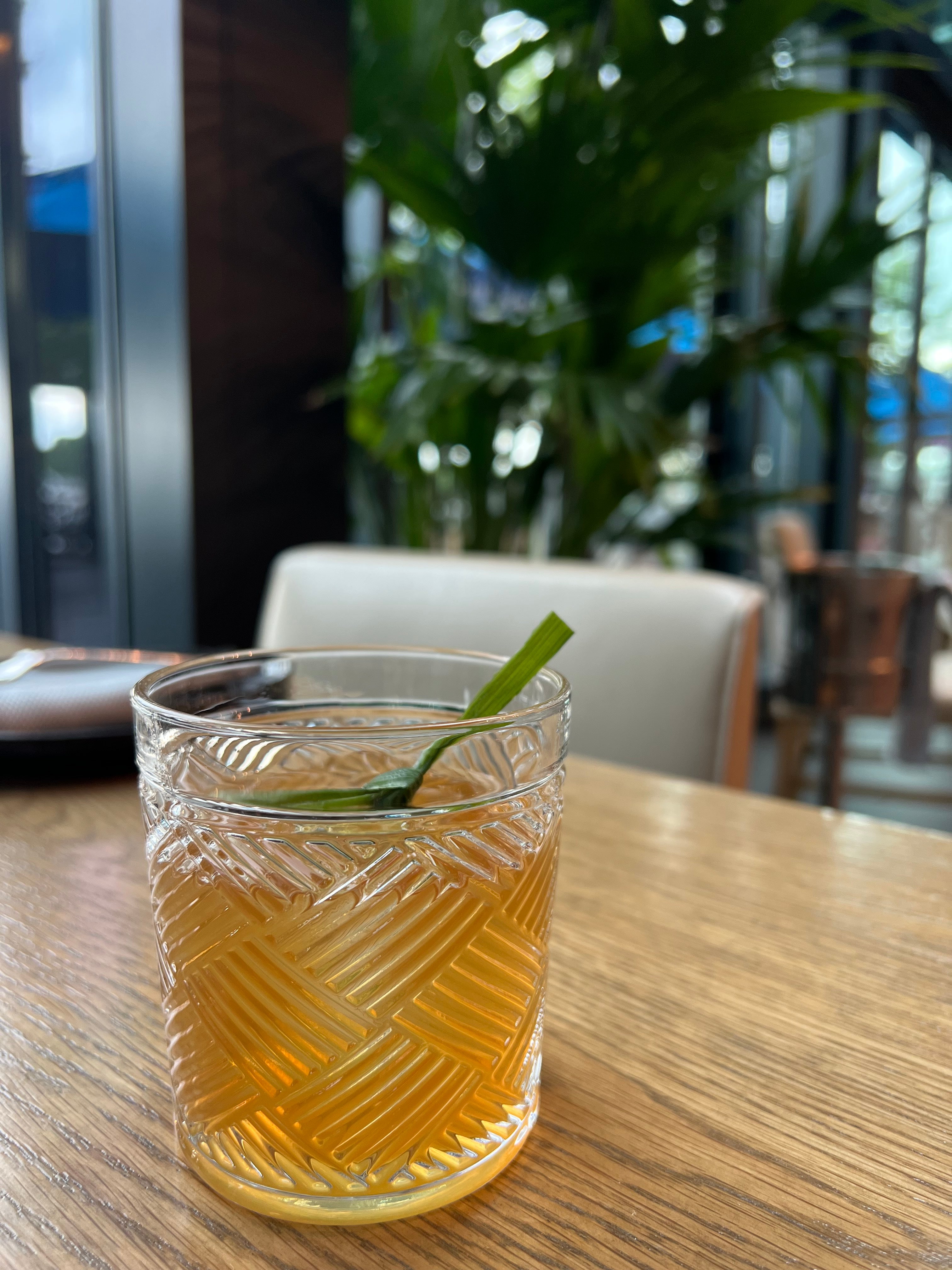
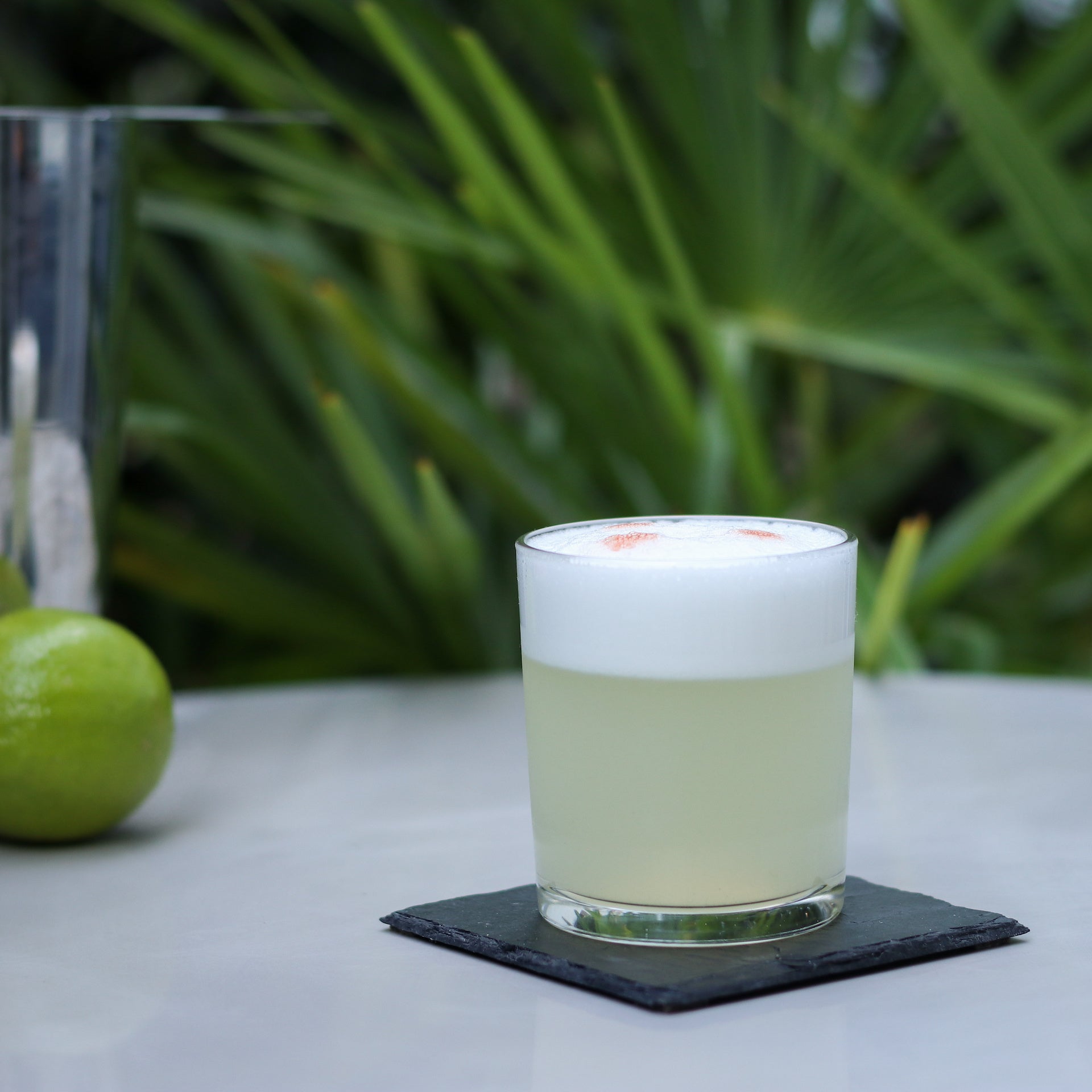
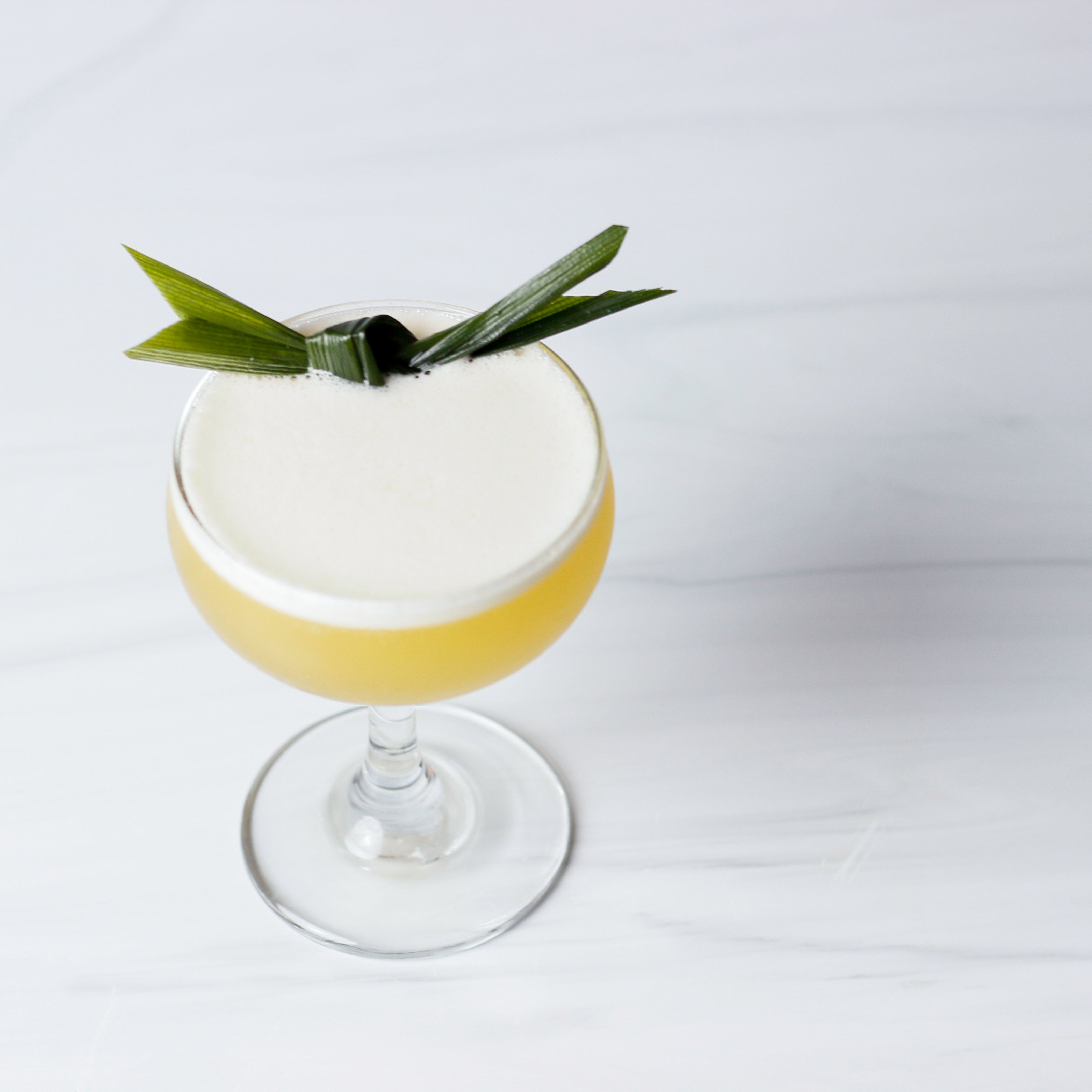
Trăm Phần Trăm’s Salted Pandan Syrup
Pandan holds a special place in my heart, evoking a sense of joy and nostalgia that takes me back to my childhood. Its distinct flavor and fragrance transport me to moments spent with loved ones, surrounded by the comforting aroma of pandan-infused treats.
Creating salted pandan syrup has been a personal endeavor for me, born out of a desire to share the magic of pandan with a wider audience. I wanted to make this beloved flavor more accessible, allowing others to experience the same feelings of delight and nostalgia that it brings to me.
Adding a touch of salt to the pandan syrup was an intuitive choice. It's a way to enhance the overall flavor profile, a delightful interplay between sweet, savory, and aromatic notes.
This salted pandan syrup is a labor of love. It's a personal journey of preserving traditions, celebrating diversity, and exploring creativity through the power of flavor. And with every syrup bottle, I hope to spark the same sense of joy, nostalgia, and wonder that pandan has always brought to me.
Salted Pandan Syrup
